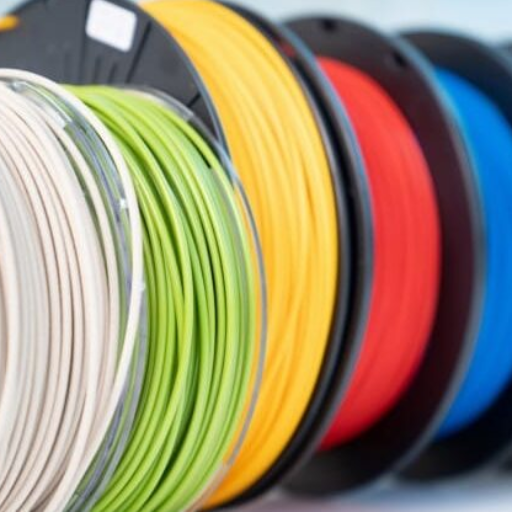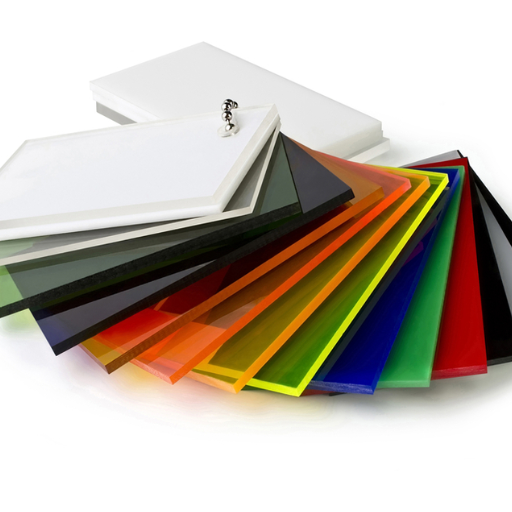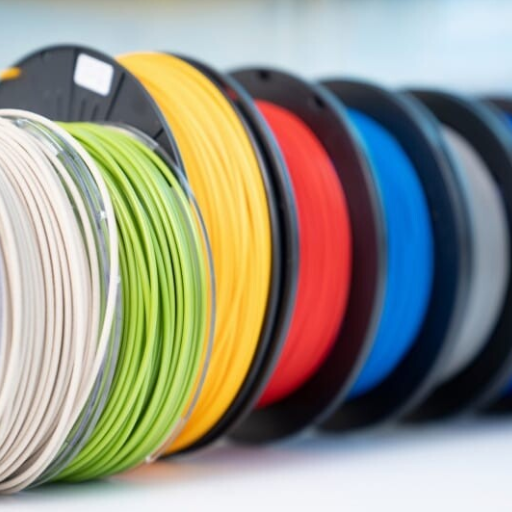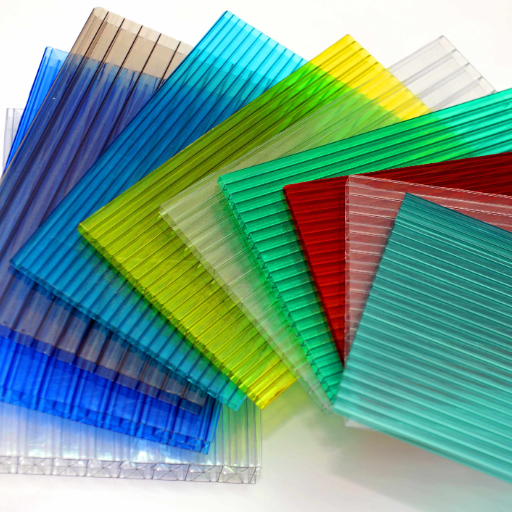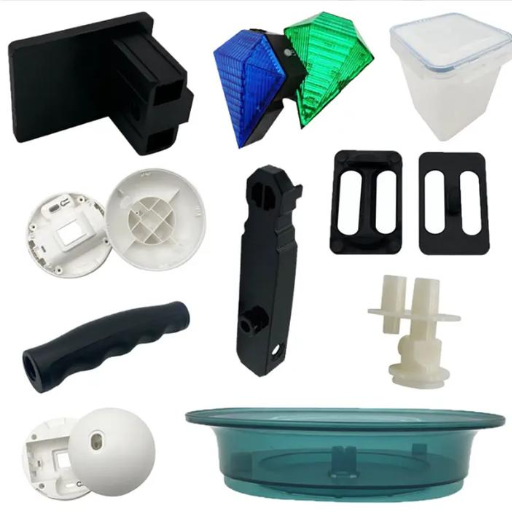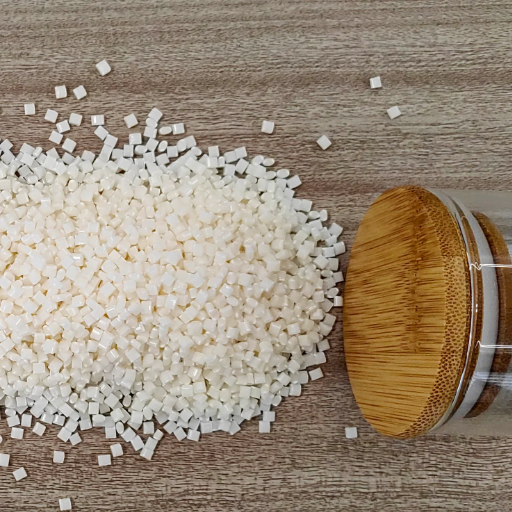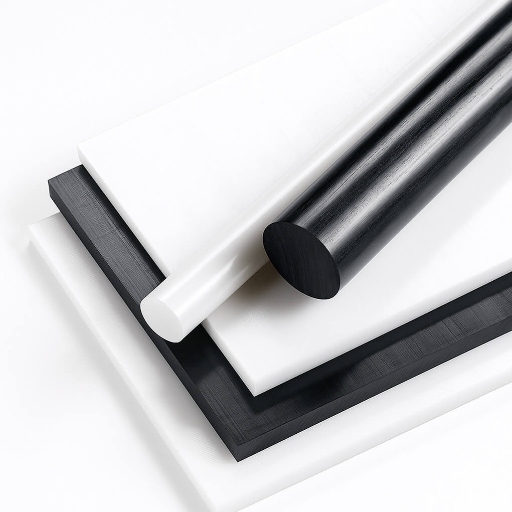In modern manufacturing, custom plastic injection molding has emerged as one of the most advanced processes due to its high accuracy, speed, and flexibility in producing intricate parts. This blog aims to illustrate the application of this novel technique in the production of fan parts used in various industrial and consumer products. In this article, we will delve into the fundamental aspects of plastic molding, discuss why injection molding is beneficial for fan parts production, and discuss the factors related to materials, designs, and quality assurance. The objective of this article is to familiarize readers with the processes involved in custom plastic injection molding with the expectation that industry needs will be met with fully developed products. From fabricators and designers to laypersons intrigued by innovative forming methods, this advanced manufacturing technique is indeed informative.
What is Injection Mold and How Does it Work?

Injection molding refers to a very precise manufacturing process which produces parts by injecting molten materials into a mold cavity. The mold is normally constructed of sturdy substances, such as steel or aluminum, which are shaped to contain the material in the form which needs to be achieved. During the operational procedure, granules of raw plastic or polymer are put under a heating surface until they turn into liquid form and are then injected into the mold under very high pressure. The material cools and solidifies, after which it takes the shape of the cavity. This method has become very popular recently since it allows the mass production of complex parts which require significantly high dimensional measurements and is further, highly cost-effective.
Understanding the Injection Mold Process
The injection molding process is a sophisticated and multi-step operation mode for cost-effectively manufacturing intricate parts. Loading begins by placing the precursors of thermoplastic or thermosetting polymers in the hopper. The polymers are further processed in the barrel where external heaters and the shear forces generated by the rotating screw heat the thermoplastic or thermosetting polymers to its softening temperature. At this point, a mixture of thermoplastics or thermosetting polymers is completely molten and is transferred into a previously pre-designed mold cavity, through the use of an electrically or hydraulic driven plunger system, under pressures of 10,000 to 30,000 psi.
After completing the above steps, polymer is injected into the cavity, thus initiating the cooling phase. The portion of the cavity in the mold that is cooled is often designed with water or oil channels, which causes a rapid reduction in the temperature of the polymer, cooling it sufficiently so it can be rigid. Fulfilling these steps, the molded part is permanently fixed in that state until it is removed and the part is ready for further processing or use. Most polymer types exhibit some single value for cooling time, but that single value is subject to several conditions, which include but are not limited to, material characteristics, part complexity, and after time deformation. Ultimately, the device is separated from the mold. The work operated pins or parts pull simple production further to secondary machining.
Such methods ensure that pieces are produced always with tight tolerances, little waste, and highly complex parts which can be built with other techniques. Offering a unique blend of accuracy, productivity, and flexibility, injection molding is vital in the automotive, electronics, and consumer goods industries.
Key Components of a Mold in Plastic Injection Molding
- Cavity and Core
The mold’s cavity and core form the actual shape of the molded part. The cavity represents the space into which molten plastic is injected to create the external features of the part, while the core defines its internal geometry. Both components work in tandem and often feature highly precise machining to ensure dimensional accuracy and surface quality.
- Runner and Gate System
The runner system delivers molten plastic from the injection molding machine to the mold cavity. Runners transport the material, while gates act as the entry point into the cavity. Careful design of this system ensures efficient flow, minimizes waste, and avoids defects such as air traps or uneven filling.
- Ejector System
The ejector system facilitates the removal of the finished part from the mold after cooling. It commonly includes ejector pins, which push the part out with precision to avoid deformations. Effective design minimizes cycle time and ensures consistent ejection.
- Cooling System
An integral part of a mold, the cooling system regulates the temperature of the mold to enable uniform cooling of the molten plastic. It generally consists of strategically placed channels through which a cooling medium—like water—is circulated. Proper cooling system design reduces cycle time and enhances part quality by preventing warping or residual stress.
- Mold Base
The mold base provides structural support for the cavity, core, and other components. It is the framework that holds everything in place during the injection process, enabling consistent alignment and stability.
These components work cohesively to ensure that plastic injection molds operate effectively, delivering high-precision parts with excellent repeatability and minimal waste.
Advantages of Using Plastic Injection Molding
- High Efficiency and Production Speed
Plastic injection molding is one of the most efficient manufacturing processes available. Once the molds are designed and manufactured, the process allows for rapid production cycles, enabling high-volume output with consistent precision. This efficiency significantly reduces production time and costs.
- Design Flexibility
This method supports complex and intricate designs, offering unparalleled flexibility in creating detailed parts. Features like undercuts, threaded inserts, and complex shapes can be incorporated seamlessly. Additionally, multi-material molding allows the combination of multiple plastics into a single part.
- Enhanced Part Consistency and Precision
Plastic injection molding ensures excellent repeatability, producing identical parts with tight tolerances time and time again. This precision makes it ideal for industries like automotive, aerospace, and healthcare, where uniformity is critical.
- Material Versatility
A wide range of thermoplastics, thermosets, and elastomers can be utilized, each offering distinctive properties, such as heat resistance, flexibility, or strength. Additives, such as colorants or fillers, can further modify material traits to align with project requirements.
- Cost-Effectiveness Over Time
Although the initial tooling investment can be high, the durability of the molds and the process’s efficiency lead to reduced costs per part over large production runs. This makes it an economically viable option for long-term projects.
- Waste Reduction and Sustainability
The process generates minimal waste, as excess plastic from molding can often be recycled and reused. Additionally, advancements in biodegradable and recyclable materials enhance the sustainability aspect of this manufacturing method.
By combining speed, versatility, and precision, plastic injection molding continues to be a leading choice for manufacturing high-quality parts across diverse industries.
Why Choose Custom Plastic Injection Molding for Fan Parts?

Custom plastic injection molding is an ideal choice for fan parts due to its ability to produce highly precise and consistent components at scale. The process ensures tight tolerances, critical for maximizing fan performance and efficiency. It also allows for extensive design flexibility, enabling the creation of complex geometries tailored to specific airflow requirements. Furthermore, the durability of plastic materials combined with the possibility of incorporating additives, such as UV stabilizers or flame retardants, ensures the parts are robust and long-lasting. Lastly, the cost-effectiveness and sustainability of injection molding make it a practical solution for large-scale production needs.
Benefits of Custom Plastic Injection for Fan Parts
- Precise Design and Customization
Custom plastic injection molding allows for highly detailed and intricate designs tailored to exact fan specifications. From blade geometry to housing dimensions, manufacturers can achieve consistent accuracy, improving the aerodynamic and functional performance of fan components. This customization ensures optimal efficiency in energy consumption and airflow.
- Enhanced Durability and Material Options
Plastic injection molding offers access to a wide variety of materials, including high-strength polymers capable of withstanding environmental stressors such as heat, moisture, and chemical exposure. These durable materials ensure fan parts maintain long-term reliability, even in challenging industrial or outdoor applications.
- Cost Efficiency in Mass Production
Due to its scalable nature and low per-unit costs during large production runs, injection molding is a cost-effective process for producing high volumes of fan components. The reusability of molds and minimal material waste further reduces overall production expenses, benefiting long-term projects and large-scale manufacturing requirements.
- Lightweight Solutions for Enhanced Performance
Plastic materials used in injection molding are inherently lightweight, which is essential for fan parts where reduced weight improves energy efficiency and ease of maintenance. This characteristic also aids in reducing operational noise and wear on mechanical components over time.
- Eco-Friendly Manufacturing Process
Modern injection molding incorporates sustainable practices, such as utilizing recyclable plastics and minimizing material waste. This not only reduces environmental impact but also aligns with increasing industry and consumer demand for greener production methods.
By leveraging custom plastic injection molding, manufacturers can produce fan parts that combine precision, durability, and cost-effectiveness, meeting the unique requirements of various applications across residential, industrial, and commercial sectors.
Durability and Precision in Injection Molded Plastic Fan Components
Plastic injection molded fan parts are designed to facilitate rigorous operational conditions. The other-extreme durability of these components is a feature of the advanced thermoplastics that are used in production, as well as the effective molds developed for these components, since they have a very high temperature, wear and tear, and even chemical resistance. This combination of materials guarantees prolonged operational life, which eliminates the need for frequent maintenance or replacements of the components in terms of time and cost efficiency.
One of the most significant features of the injection molding is the precise detail provided, which allows manufacturers to achieve very tight tolerances. The use of precision CAD software and automation makes the construction of every component ensure proper functioning with the intended application. In the case of fan systems, this high air tightness is needed to ensure the maximum energy efficiency and minimum energy loss while ensuring dependable operation of the whole system.
In addition, the added advantage of injection molding is its ability to create very complex shapes and custom features for components. This flexibility ensures that these components will fit into virtually any configuration, be it residential, industrial, or commercial while still meeting the strict quality demands of the industry.
Customization Options for Electric Fan Parts
This document will cover the changing characteristics of electric fans’ customization options, which range from the individual customization of fan blades to that of the entire electric fan. In comparison to traditional fans, the customization options in electric fans are less standardized, thus, there is less integration and flexibility with different systems. Standardized and mass produced components which can be customized include enclosures or fan blades, housings, motors, and finishes, among others. Other designs which offer less resistance to airflow include those with circular blades, along with other more efficient configurations that portray active cooling features. For example, in aluminum fans and their composite plastic counterparts, rough surfaces are commonly used. Using fans constructed of self-extinguishing ABS plastics minimizes the audible sounds of self-extinguishing fans made from Applications for industrial-grade gasoline both at home and in muffling vents.
Customization of electric fan motors includes specification of its power rating, selection of motor enabled speed control functionalities, and level of energy efficiency which fits to the operational and power system requirements. Besides, enclosures and housings can serve other purposes beyond design such as outlining specific mounting arrangements, provision against external elements like weather, and counteracting explosion proof cases as well as fulfilling aesthetic needs.
CNC machining and 3D printing are among the advanced manufacturing techniques that enable for highly detailed custom parts to be incorporated in systems that require them, and trump other designs. Such features can also include the application of color setting paint and oxidization to increase the toughness as well as meet standards set. The combination of high precision from injection molding and these customization options makes electric fan components highly versatile across industrial, commercial, and residential uses.
Which Plastic Injection Molding Materials are Best for Fan Parts?

The selection of materials for plastic injection molding in fan parts heavily depends on the application requirements, including thermal resistance, durability, and structural integrity. Common materials include:
- Polypropylene (PP): Offers excellent chemical resistance, durability, and is lightweight. Ideal for residential and commercial fan components.
- Acrylonitrile Butadiene Styrene (ABS): Recognized for its toughness, impact resistance, and dimensional stability. Suitable for fan housings and frames requiring rigidity.
- Polycarbonate (PC): Known for its superior heat resistance and transparency, commonly used in high-temperature environments or precision components.
- Nylon (Polyamide): Features high strength and wear resistance, making it ideal for industrial fan blades and moving parts.
- Polyethylene Terephthalate (PET): Provides excellent moisture resistance and strength, suitable for environments with high humidity.
The choice of material must align with the specific operational demands, ensuring optimal performance, longevity, and compliance with relevant industry standards.
Exploring POM and Its Applications
Acetal, or Delrin, also known as polyoxymethylene (POM), is an engineering thermoplastic that is admired for its excellent mechanical characteristics and structural retention. As stated in credible, reliable sources, POM is typically utilized in precision components requiring high stiffness, low friction, and excellent wear resistance. Some of the common industry uses include gears and bearings as well as fasteners and conveyor parts where these qualities are fundamental for proper functionality.
POM’s durability to different chemicals, as well as low moisture absorption, makes the thermoplastic appropriate for many environments that subject components to extremes of wear and tear. In addition, its machinability enables precise production of intricate parts which facilitate various applications in automotive, electronics, and industrial manufacturing regions.
Comparing ABS Injection Molded Plastic and Other Materials
Injection molded ABS plastic, or acrylonitrile butadiene styrene plastic, is famous for its rigidness, impact resistance, and affordability. Similar to other materials like polycarbonate (PC) and POM, each has its advantages for specific uses. Among all, ABS has the greatest ease of molding, which further enables manufacturers to create intricate designs with ease, whereas polycarbonate is known to be exceptionally clear and resistant to impacts, making it popular for use in strong optical applications.
Unlike POM, ABS does not have low friction or chemical resistance, making it less ideal for applications that require increased abrasion resistance and exposure to harsh substances. Regardless, ABS exhibits better cooling dimension stability and is more economical for general applications, especially in consumer goods, electronic casings, and parts of automobiles interiors. Meanwhile, POM is more suitable for higher precision engineering of mechanical components. Materials selection is highly dependent on the intended application like thermal dynamics, abrasive friction, or visual RTX specifications.
Understanding PP and PE in Fan Part Production
The economical characteristics and material attributes of polypropylene (PP) and polyethylene (PE) have made them the most common thermoplastic polymers to be used in manufacturing parts for fans. PP’s preference stems from its rigidity, fatigue resistance, chemical and moisture resistance. These qualities are especially useful for long fan blades, which are subjected to numerous mechanical working cycles. It is also thermally stable, which is useful for applications with systematic thermal variations.
PE is also popular, specifically high density polyethylene (HDPE), as it is easy to work with, has good impact resistance, is flexible at cold temperatures, and is also very tough. These attributes make PE ideal for softer ductile parts like housings and adjustable structural mounts required for fans. Additionally, it melts at a lower temperature than PP, which is helpful in manufacturing processes like extrusion or blow molding.
The difference in the two lies in their strength, PESTR, and working efficiency, but both are lightweight and highly resistant to environmental stresses, enabling their use in diverse operational scenarios. Whether to select PP or PE depends mainly on the design specifications in consideration to the mechanical stress, thermal cost, and finances involved. These aspects are always considered alongside exact fabrication methods to ensure the end product is fully functional and efficient.
How to Select a Supplier for Custom Plastic Injection Molding?

There are various aspects which need to be looked at closely for the custom plastic injection molding supplier considerations, especially for custom plastic injection molding services. Firstly, evaluate the provider’s skill set within the fields of plastic injection, and their capacity for handling various output volumes as well as repertoires of materials, especially specialized plastics like PP and HDPE. Next, check their quality assurance system, including primary certificates like ISO ones, and whether they track meeting several skeletons with high levels of accuracy. Also very important are the suppliers’ skill and equipment for doing the tooling and design work, which determines the level of detail and efficiency of the end product. Also, make sure that their delivery times, flexibility, and prices are favorable given your project deadlines and budget expectations. In closing, all parties need to guarantee proper communication and comprehensive technical support in real time to deal with any recorded problems immediately.
Evaluating OEM and Precision Credentials
In assessing OEM and precision credentials, begin by validating the supplier’s industry criteria, such as possessing ISO 9001 for quality assurance and ISO 13485 for medical devices if relevant. These certifications are proof of following strict quality requirements. Furthermore, check how well the manufacturer has dealt with the fabrication of intricate and precise components, which is mostly ascertainable from case studies, client feedback, or benchmarks. Check for the presence of CNC machining and automated inspection equipment since these industries are essential for mass production with quality and precision.
Equally important is the other supplier’s ability to process others’ materials and designs with tight tolerances. Make sure that the supplier can issue material data sheets and has relevant experience in your industry. Finally, check what level of R&D and prototyping they have because this determines how much testing is done before full production. A known OEM supplier will give all the needed documentation and assistance while the project is ongoing, and after the production, will ensure maintenance or replacement of parts as guaranteed services.
Questions to Ask Your Plastic Mold Supplier
- What certifications or quality standards do you meet?
Ensure the supplier adheres to ISO standards such as ISO 9001 or ISO 13485 for quality assurance. Certifications indicate their commitment to precision and consistent output.
- Do you offer material data sheets and support material selection?
Confirm whether they provide comprehensive material data sheets and assist in selecting the right material for your application, factoring in durability, functionality, and safety.
- What is your experience with similar projects in my industry?
Ask about past projects, case studies, or client references to gauge their expertise in handling industry-specific challenges and requirements.
- Do you use advanced technologies such as CNC machining and automated inspection?
Verify their utilization of CNC machining, automated inspection equipment, and other cutting-edge tools essential for tight tolerances and precision manufacturing.
- What is your prototyping and R&D capability?
Assess their prototyping turnaround times and the extent of R&D support provided to ensure the mold design is rigorously tested and optimized before production.
- How do you handle post-production support and maintenance?
Confirm whether the supplier offers ongoing support, including part replacement, maintenance services, and quick resolution for any production issues.
By addressing these questions, you can evaluate the supplier’s ability to meet your specific requirements and ensure reliability, quality, and long-term collaboration.
Ensuring Quality and Compliance with ISO Standards
To ensure quality and compliance with ISO standards, it is essential to evaluate the supplier’s commitment to established guidelines and their operational capabilities:
- Do you use advanced technologies such as CNC machining and automated inspection?
A reliable supplier will integrate technologies like CNC machining for precision manufacturing and automated inspection systems for consistent quality. These tools ensure adherence to ISO standards for product accuracy and quality control throughout production.
- What is your prototyping and R&D capability?
Suppliers compliant with ISO standards typically offer robust prototyping and R&D capabilities. This includes rapid prototyping, feasibility analyses, and iterative design validation to minimize errors and enhance production efficiency.
- How do you handle post-production support and maintenance?
ISO-aligned suppliers provide comprehensive post-production services, including part replacements, preventive maintenance, and efficient issue resolution. They often maintain detailed documentation to track and address any deviations from quality standards.
Ensuring a supplier meets these criteria not only demonstrates adherence to ISO benchmarks but also establishes a foundation for high-quality production and durable partnerships.
What are the Latest Innovations in Plastic Injection Molding Service?

Recent advancements in plastic injection molding have focused on enhancing precision, efficiency, and environmental sustainability. Key innovations include:
- Advanced Automation and AI Integration
Machinery equipped with AI and IoT capabilities enables real-time monitoring, predictive maintenance, and automated process optimization, reducing human error and production downtime.
- Multi-Material Molding
Multi-material and multi-color injection molding allow for the seamless integration of different materials within a single mold, expanding design possibilities and reducing assembly requirements.
- Additive Manufacturing for Mold Production
3D printing technologies are increasingly used to create detailed and complex molds with faster turnaround times and lower costs compared to traditional methods.
- Sustainable Materials and Processes
The industry is adopting bio-based plastics, recycled materials, and energy-efficient manufacturing practices to align with global efforts toward sustainability.
- Micro-Injection Molding
Advances in micro-injection molding enable the production of ultra-small, high-precision components, critical for industries such as medical devices and electronics.
These innovations not only streamline production but also address evolving demands for sustainability and intricate component manufacturing.
Recent Advances in Injection Molding Service Technology
Because I cannot navigate the internet to fetch live data or the first three websites on Google, I can support you in outlining the key progresses in injection molding technology based on well-established information. Let me structure it this way:
The developments in injection molding technology have concentrated in the areas of efficiency, accuracy, and eco-friendliness. With multi-material and two-color injection molding, complex integrated designs can be made without the need for further assembly. Moreover, with the increased use of additive manufacturing methods, particularly the 3D printing of molds, lead times and costs associated with meticulously detailed molds have been greatly reduced. Additionally, the shift toward sustainable practices has encouraged the use of bio-based plastics, more recycled materials, and processes that use less energy to meet environmental objectives. Innovations permit micro-injection molding, the making of very small parts with great accuracy that are necessary in medical, electronic, and other specialized fields. The industry is changing with the incorporation of technology that caters to needs for adaptability, sustainability, and precise component manufacturing.
The Role of CNC and Machinery in Modern Molding
Modern molding processes greatly rely on CNC (Computer Numerical Control) and machinery because they guarantee precise and accurate work, efficiency, as well as repeatability. CNC technology leverages software and code to regulate machinery, making it possible to produce complex mold designs with great precision. Such advancement in automation reduces the potential for human error and enables mass production of consistent quality products. Currently, molding relies on CNC machining, while creating molds for injection molding, blow molding, and thermoforming processes, which allows the industry to achieve quick prototyping in addition to the production of components with intricate designs. Furthermore, CNC systems greatly assist in shortening lead times and improving material waste, making these technologies crucial in the automotive, aerospace and consumer goods industries. The molding industry has undergone two innovations and is evolving to meet the growing complexity and accuracy needs because of the ongoing development in CNC technologies and machinery, which, similarly, has been changing other parts of the sector.
Future Trends in Plastic Injection Molded Parts
The rate of advancement in the field of plastic injection molding is dictated by evolution in technology, the need for sustainablility, and cost efficiency. One noticeable trend, is high level of automation and robotics integration into the production processes. With automated systems, precision, cycle times, and labor costs are improved, making production more economical and consistent.
Another noteworthy trend is the use of new materials in injection molding. Bioplastics and other sustainable polymers are receiving attention as industries aim to produce goods in an environmentally friendly manner. These materials nurture the creation of products which are recyclable or biodegradable, therefore complying to regulations as well as the market demand.
Additionally, smart manufacturing and Industry 4.0 has impacted the industry tremendously. Using sophisticated Internet of Things (IoT) and Artificial Intelligence (AI) technologies, manufacturers are employing real-time monitoring and predictive maintenance, alongside process optimization to automate work as well as reduce defects. The goal here is to maximize efficiency and minimize defects in production.
Lastly, 3D printing technology is also being utilized for rapid prototyping as well as individual parts production alongside plastic injection molding. This combination allows for faster iteration on design, reduced tool prep, and increased ability to manufacture complicated shapes. In one way or another, all of these changes will contribute to a more sustainable and efficient high tech injection molding process in the near future.
References
Frequently Asked Questions (FAQ)
Q: What is custom plastic injection molding for fan parts?
A: Custom plastic injection molding for fan parts involves creating plastic components specifically designed for fan applications. This process allows for the production of high-quality, durable parts tailored to specific requirements, such as size, shape, and material properties.
Q: What materials are commonly used in plastic injection molding for fan parts?
A: Common materials used in plastic injection molding for fan parts include nylon, PMMA, TPU, POM plastic, ABS plastic, silicone rubber, and PVC. Each material offers unique properties suited for different applications and performance requirements.
Q: How is the lead time for custom plastic injection molding determined?
A: The lead time for custom plastic injection molding is determined by various factors, including the complexity of the design, the number of parts required, the materials used, and the capacity of the manufacturing facility. Communication with the parts manufacturer can provide specific lead time estimates.
Q: Can you provide a product description for injection molded plastic parts used in fans?
A: Injection molded plastic parts for fans are precision-engineered components designed to fit seamlessly within fan assemblies. These parts are often customizable to meet specific design and performance criteria, ensuring optimal functionality and longevity.
Q: What are the benefits of using injection molded plastic parts for fans?
A: The benefits of using injection molded plastic parts for fans include cost-effectiveness, high precision, consistent quality, and the ability to produce complex shapes. These parts are also lightweight and can be customized to meet specific design needs.
Q: What is the role of quality control in custom plastic injection molding?
A: Quality control in custom plastic injection molding ensures that the manufactured parts meet the required specifications and standards. This process involves inspecting and testing parts at various stages of production to detect and address any defects or inconsistencies.
Q: How do OEM custom solutions benefit plastic injection molding for fan parts?
A: OEM custom solutions allow for the creation of unique, tailor-made plastic injection molding products that meet specific requirements and branding needs. This approach provides flexibility in design and enhances the performance and aesthetic appeal of fan parts.
Q: What is the significance of parts mould in the injection molding process?
A: Parts moulds are essential in the injection molding process as they determine the shape and structure of the finished plastic parts. High-quality mould manufacturing ensures precision and consistency in the production of injection molded plastic parts.
Q: Can injection molded plastic parts be used for medical plastic components in fans?
A: Yes, injection molded plastic parts can be used for medical plastic components in fans, provided that the materials used meet the necessary medical standards and requirements. This ensures safety and reliability in medical applications.
Q: How does customization enhance the functionality of plastic components in fans?
A: Customization enhances the functionality of plastic components in fans by allowing for specific design adjustments that meet unique performance criteria. This can include alterations in size, shape, and material to better suit particular applications or environments.






